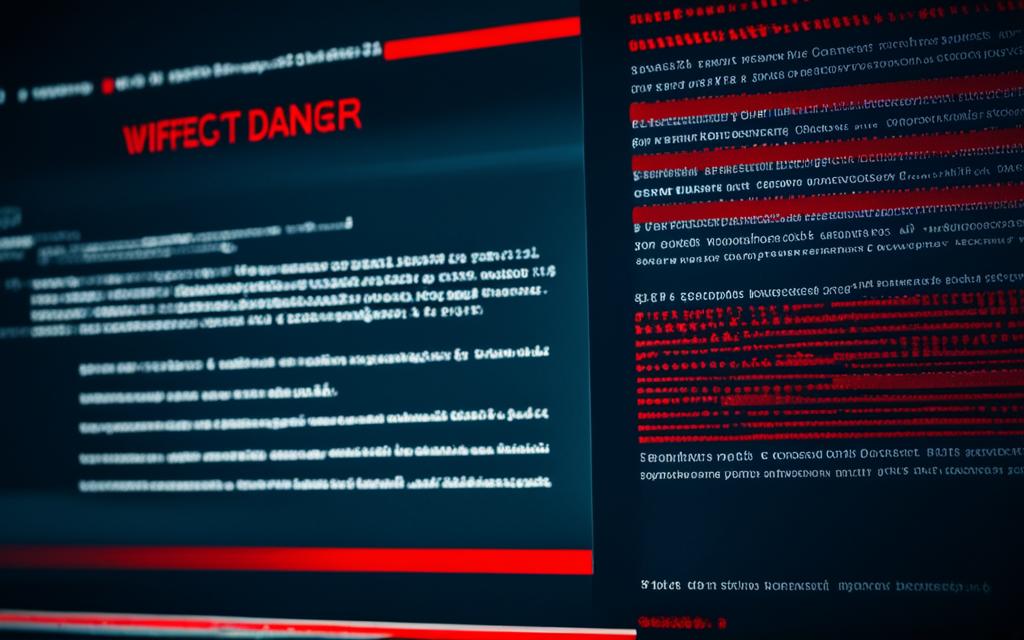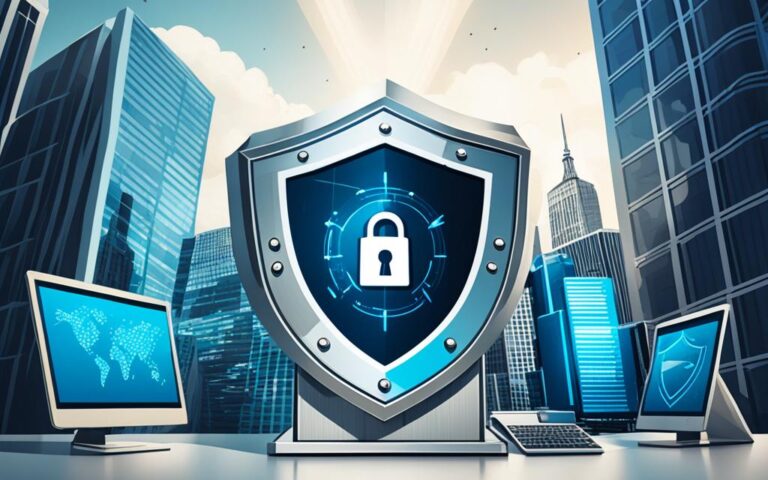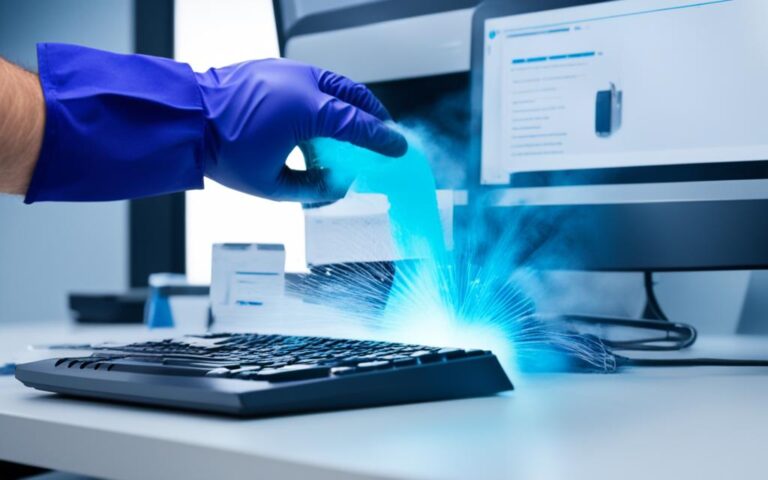Trojan Removal: Safeguarding Your System Against Hidden Threats
In today’s digital landscape, the prevalence of hidden Trojan dangers poses a serious risk to the security of our systems and personal information. Trojan viruses, disguised as innocent programs, can infiltrate our computers and wreak havoc, leaving us vulnerable to identity theft and cybercrimes. It is crucial to be informed about these hidden threats and take proactive measures to protect ourselves.
In this article, we will delve into the world of Trojan viruses, exploring what they are, where they come from, and most importantly, how we can defend against them. From understanding their workings to effectively removing them, we will equip you with the knowledge and tools necessary to safeguard your system.
It is time to take control and protect yourself from the lurking dangers of Trojan viruses. Let’s dive into the world of Trojan removal and safeguarding your system against hidden threats!
What Are Trojan Viruses and How Do They Work?
Trojan viruses are a specific type of malware that enter your computer disguised as legitimate programs. Once inside, they can perform destructive actions without your knowledge. Some Trojans remain dormant until instructed by a hacker, while others immediately start their malicious activities. They can download additional malware, disable your antivirus software, and even hijack your computer for criminal activities. It is essential to understand how Trojan viruses work in order to effectively protect yourself from them.
To further grasp the workings of Trojan viruses, we need to explore their disguised nature as real programs. Unlike other malware that may be more easily recognizable, Trojans cloak themselves to appear as legitimate software, tricking users into downloading and installing them. This deceptive strategy allows Trojans to spread undetected, making them particularly dangerous.
Once a Trojan gains access to your system, it can initiate a variety of destructive actions, each designed for the benefit of the attacker and at the expense of your computer’s security. One common objective is to steal personal information, such as login credentials, credit card details, or sensitive documents. This stolen information can then be used for financial fraud, identity theft, or sold on the dark web to facilitate cybercrimes.
Furthermore, Trojans can modify or delete files, corrupt your operating system, or even create a backdoor for remote hackers. Once these actions have been carried out, the damage inflicted can be permanent and may require extensive recovery efforts or the complete reinstallation of your operating system.
It is crucial to remain vigilant and take preventative measures to protect yourself from Trojan viruses. By implementing robust cybersecurity practices, such as regularly updating your software and using reputable antivirus programs, you can significantly reduce the risk of falling victim to Trojans.
How to Remove Trojan Viruses
Removing Trojan viruses from your system requires a careful and systematic approach. One way to remove Trojans is by disabling startup items that are not from trusted sources and rebooting your device in safe mode. This prevents the virus from interfering with the removal process. Additionally, using a trusted antivirus solution is highly recommended. Reliable antivirus programs can detect, isolate, and remove Trojans from your system effectively. It is important to be cautious when removing programs to avoid accidentally affecting essential system files.
Disabling Startup Items
To effectively remove Trojan viruses, start by disabling startup items that are not from trusted sources. These startup items can include suspicious programs or applications that may be associated with the Trojan. By preventing these programs from running during startup, you can minimize the virus’s ability to cause further harm.
Here’s how you can disable startup items:
- Open the Task Manager by pressing Ctrl + Shift + Esc or right-clicking on the taskbar and selecting “Task Manager”.
- Go to the “Startup” tab to view the list of programs that run during startup.
- Identify any suspicious or unfamiliar programs and disable them by right-clicking and selecting “Disable”.
Rebooting in Safe Mode
After disabling the startup items, it is recommended to reboot your device in safe mode. Safe mode allows your computer to start with minimal and essential drivers, preventing any interference from the Trojan virus during the removal process.
To reboot in safe mode:
- Press the Windows key + R to open the Run dialog box.
- Type msconfig in the dialog box and click “OK”.
- In the System Configuration window, go to the “Boot” tab.
- Check the “Safe boot” option and select “Minimal”.
- Click “OK” and restart your device.
Using a Trusted Antivirus Solution
In addition to disabling startup items and rebooting in safe mode, it is crucial to use a trusted antivirus solution to remove Trojan viruses. Reliable antivirus programs are equipped with advanced detection and removal capabilities that can effectively eliminate Trojans from your system.
Here are some steps to follow when using an antivirus solution:
- Ensure that your antivirus software is up-to-date to detect the latest types of Trojan viruses.
- Perform a full system scan to identify and isolate any Trojan infections.
- Follow the prompts provided by your antivirus software to remove the detected Trojans.
- After removal, restart your computer to complete the cleaning process.
By following these steps and using reputable antivirus software, you can effectively get rid of Trojan viruses and protect your system from further harm.
Where Do Trojan Viruses Come From?
Trojan viruses can enter your computer through various sources. Hackers often exploit unsuspecting users by using common vectors for Trojan infections. Understanding these sources is essential to protect yourself from these hidden threats.
1. File-Sharing Sites
File-sharing sites are popular platforms where users can upload and download various files. Unfortunately, hackers take advantage of these sites by uploading cracked versions of legitimate software embedded with hidden Trojans. Users who unknowingly download these infected files expose their systems to Trojan infections.
2. Email Attachments
Email attachments are a common method for spreading Trojan viruses. Hackers often send fake emails that appear to be legitimate, containing malicious attachments disguised as harmless files. Users who open these attachments unknowingly install Trojans on their systems, creating a gateway for cybercriminals.
3. Spoofed Messages
Spoofed messages are another sneaky way hackers deliver Trojan viruses. They create messages that mimic correspondence from someone you trust, such as a friend or a trusted organization. These messages often include links or attachments that, once clicked, unleash Trojans onto your computer without your knowledge.
4. Infected Websites
Visiting infected websites can unknowingly expose your system to Trojan infections. Hackers compromise legitimate websites by injecting malicious code that downloads Trojans to visitors’ devices. Clicking on compromised links or interacting with infected web content can result in Trojan infiltration.
5. Hacked Wi-Fi Networks
Public Wi-Fi networks that have been hacked can also serve as sources of Trojan infections. When you connect to an unsecured or compromised Wi-Fi network, hackers can intercept your data and inject Trojans into your system. It is important to be cautious when using public Wi-Fi connections to prevent falling victim to this type of attack.
To effectively protect your computer from Trojan viruses, it is essential to be aware of these potential sources of infection. By exercising caution when utilizing file-sharing sites, opening email attachments, responding to messages, browsing websites, and connecting to Wi-Fi networks, you can significantly reduce your risk of falling victim to Trojan attacks.
“Understanding the common sources of Trojan infections is crucial in safeguarding your system and data.” – Cybersecurity Expert
Signs and Symptoms of Trojan Infection
Recognizing the signs and symptoms of a Trojan infection is crucial for early detection and mitigation. By being vigilant and observant of any unusual behavior on your device, you can proactively identify a potential Trojan infection and take prompt action to safeguard your system.
Some common indicators of a Trojan infection include:
- Appearance of unfamiliar programs or icons on your computer
- Slow or erratic operating system performance
- Unexplained financial transactions
- Influx of pop-up ads or suspicious emails
If you notice any of these signs, it is important not to ignore them. They could be warning signs of a Trojan virus compromising your system and potentially leading to further harm.
Unfamiliar Programs or Icons
One of the telltale signs of a Trojan infection is the sudden appearance of unfamiliar programs or icons on your computer. These programs may be disguised as legitimate software or files, but they are actually part of the Trojan malware. If you come across any unknown applications or suspicious shortcuts on your desktop or in your program list, it is essential to investigate further and take appropriate measures.
Erratic Operating System Performance
If your computer starts behaving erratically, such as freezing or crashing frequently, it can be an indication of a Trojan infection. Trojans often consume significant system resources, causing your operating system to slow down or become unresponsive. If you notice such erratic behavior, even when performing routine tasks, it is advisable to investigate the cause and address it promptly.
Mysterious Financial Transactions
Unexplained financial activity, such as unauthorized transactions or unfamiliar charges on your bank or credit card statements, can be a clear sign of a Trojan infection. Some Trojans are specifically designed to capture your personal and financial information, allowing cybercriminals to carry out fraudulent activities using your accounts. If you discover any suspicious financial transactions, it is crucial to take immediate action to protect your finances and notify your financial institution.
Pop-ups and Suspicious Emails
An influx of pop-up advertisements or an increase in suspicious emails can also indicate a Trojan infection. Trojans often generate pop-up ads or trigger spam emails as part of their malicious activities. These pop-ups and emails may contain phishing attempts or links to further infect your system. If you notice a sudden surge in pop-ups or receive emails from unknown senders that seem suspicious, exercise caution and consider it a potential sign of a Trojan infection.
It is important to note that these signs and symptoms may also be indicative of other issues with your computer. However, when experienced together, they strongly suggest the presence of a Trojan infection. In such cases, it is recommended to run a thorough antivirus scan using reliable software to identify and remove any malicious files or programs.
Being aware of these signs and symptoms can help you take timely action against Trojan infections, protecting your system and personal information from harm.
Tips for Preventing Trojan Infections
Preventing Trojan infections requires a proactive approach to cybersecurity. By implementing strong security practices, you can significantly reduce the risk of Trojan infiltrations and protect your system from malicious attacks. Here are some essential tips to help you stay safe:
Install Reputable Antivirus Software
Choose a reliable antivirus software and keep it up to date. Regularly scan your system for potential threats and ensure that the software’s virus definitions are current. This will help detect and eliminate any Trojan viruses that may attempt to compromise your computer.
Regularly Update Your System
Keep your operating system, software, and applications up to date with the latest security patches. Developers frequently release updates to address vulnerabilities that hackers may exploit. By staying current, you can close any security loopholes that Trojans may exploit to gain access to your system.
Use Complex Passwords
Create strong, unique passwords for all your accounts. A strong password should be a combination of uppercase and lowercase letters, numbers, and special characters. Avoid using common phrases or easily guessable information, such as your name or birthdate. By using complex passwords, you make it difficult for attackers to gain unauthorized access to your system.
Exercise Caution When Downloading Files
Be cautious when downloading files from the internet, especially from untrusted sources. Before downloading any file, check its source for authenticity and scan it with your antivirus software. Avoid downloading files from file-sharing sites or clicking on suspicious pop-up ads, as they may contain hidden Trojan viruses.
Practice Safe Email Habits
Exercise caution when opening email attachments or clicking on links in emails. Be skeptical of unsolicited emails, especially those that appear too good to be true or come from unknown senders. Hackers often use emails as a means to deliver Trojan viruses. Disable automatic image loading in your email client to prevent potential drive-by downloads.
Educate and Raise Awareness
Constantly educate yourself and raise awareness among your colleagues, friends, and family about the risks of Trojan infections. Train them to follow safe internet practices, such as avoiding suspicious websites, regularly updating software, and being cautious when sharing sensitive information online. By promoting user education and awareness, you contribute to a safer online environment.
By following these tips and integrating them into your daily online activities, you can effectively prevent Trojan infections and keep your system secure. Remember, strong security practices, cautious downloading and email practices, and user education and awareness are vital in safeguarding your digital assets.
Conclusion
In conclusion, hidden Trojan dangers pose a significant risk to your computer and personal information. To safeguard your system, it is crucial to understand what Trojan viruses are, how they work, and where they come from. By staying informed, you can take the necessary steps to protect yourself from these insidious threats.
Removing Trojan viruses requires a meticulous approach. Utilizing trusted antivirus solutions is vital to effectively eliminate these hidden dangers from your system. Additionally, adopting strong security practices, such as regularly updating your software and using complex passwords, can further enhance your defense against Trojan infections.
Prevention is key. By educating yourself and others about the risks of Trojans, you can promote safe internet practices and minimize the chance of future infections. Remember to exercise caution when downloading files or opening email attachments, as these are common avenues for Trojan infiltration.
By staying vigilant and implementing proactive measures, you can safeguard your system, protect your personal information, and ensure the safety of your digital assets. Don’t let hidden Trojan dangers compromise your computer security—take action now to protect yourself from these pervasive threats.












